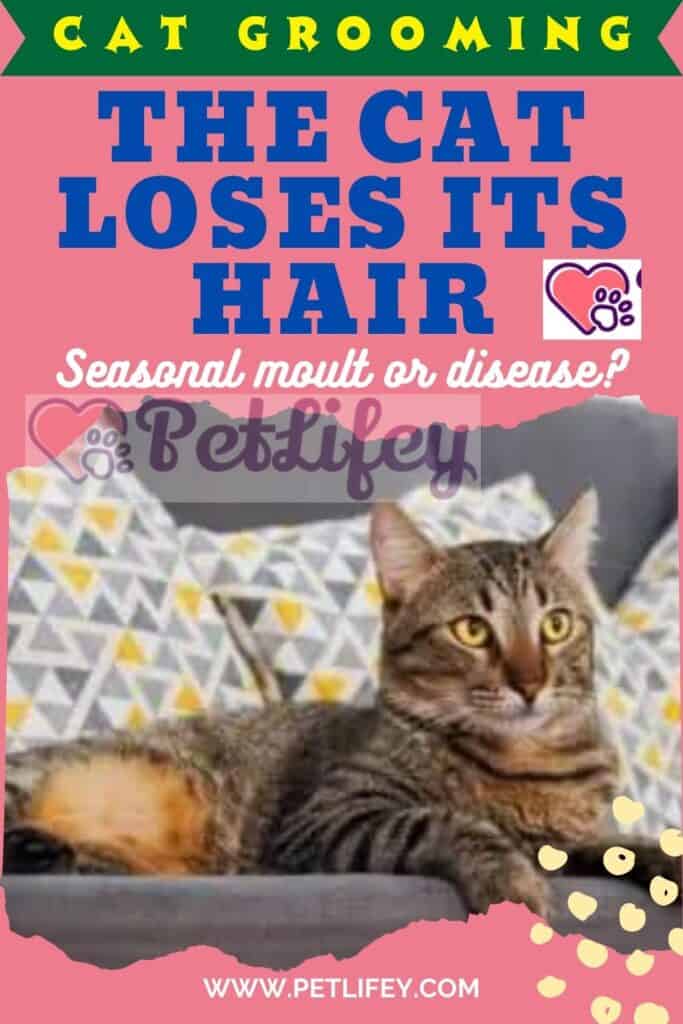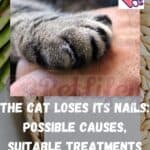
When the cat loses its hair: what are the symptoms of a disease? Here are all the causes and remedies of feline alopecia.
Example of cat hair loss or alopecia
That the cat loses its hair is absolutely normal: at two times of the year in particular, in autumn and summer, the cat ‘becomes lighter’: the loss of the furry outer coat serves to better face the summer heat, while because of the cold it gets thicker. But when itching and excessive hair loss are symptoms of a disease and it is worth talking about alopecia? We observe our cat and try to pay attention to changes that can reveal something important.
Feline alopecia: what it is and its causes

When we notice excessive hair loss in the cat, complete or in patches, it is good to note if other symptoms occur. They are itchy, which can be related to dermatitis, micro-wounds, due to the hair that cannot come out on the now thickened coat and burns, caused by the lack of protection of the hair in the bare parts.
Dermatitis: they can be contact or allergic and are accompanied by severe itching. In the case of atopic dermatitis it is due to an allergen present in the environment in which the cat lives. But it could also have food-related or flea-related allergy causes. It is resolved with natural remedies, such as aloe or other soothing creams, or with a collar that prevents the cat from biting and scratching.
Atopic alopecia: due to contact allergy, it is usually accompanied by symptoms such as red eyes and respiratory system difficulties.
Alopecia areata: it is so called because it can affect specific areas of the head and neck. It is not necessarily linked to the cat’s diet, but it can be hormonal in nature: in any case it is always better to consult the opinion of the veterinarian.
Stress: like humans, cats can experience periods of great emotional stress and suffer from psycho-physical problems that result in the loss of hair. If we ourselves experience a stressful period at home, our cat will suffer: therefore it will be necessary to understand how to calm our stressed cat.
Folliculitis: also called ‘feline acne’, it is not fatal but it is annoying and time consuming to cure, just like the one that affects boys. It usually occurs in the chin area and can extend to the cat’s mouth. The causes can be disparate: hormonal problems, difficulty in cleaning and therefore infection of the hair bulb, allergy to the plastic of the bowl or when the follicle is ‘blocked’ by a keratin plug, the blackhead. We must necessarily wait for it to heal by itself, perhaps disinfecting the affected part from time to time.
Feline demodicosis: also known as red mange, caused by the Demodex cati mite. The symptoms, quite evident, are itching, excessive cleaning of the coat, flaking, erythema and abrasions. In addition to these obvious signs, it is possible to diagnose it through in-depth blood tests and FIV / Felv tests. It is treated with subcutaneous injections of ivermectin and a topical treatment of the affected area with lime sulphide.
Telogen outflow: often related to stress, for example post-partum, it mainly affects the head and limbs. The cause is a new and sudden follicular surge: in essence it is an almost simultaneous change in the hair, so while you book a visit to the vet it is likely that a new hair has already grown. But it is always better to proceed with veterinary assistance to a microscopic examination of the skin to have a more certain diagnosis.
Feline dermatophytosis: also called ‘ringworm’, it is visible to the naked eye when we notice scabs and dandruff on our cat’s fur. The cause is the pathogenic fungus, known as Microsporum Canis, which lives on the feline coat, which therefore affects the epidermis layer and the nails. They can usually lead to non-itchy alopecia and varying degrees of inflammation.
Cushing’s syndrome: it is a rather rare endocrine disease in cats, due to an increase in cortisol in the blood. It manifests itself with polydipsia, which is an increase in thirst, and polyuria, which is an increase in the need to urinate. It is diagnosed with ultrasound and CT scan, and medication treatment is essential and, if the doctor deems it appropriate, proceed with a mini invasive surgery.
How to prevent or reduce hair diseases
Although some of the aforementioned diseases are due to an infection, it is important to observe some simple rules to avoid that the cat’s hair can undergo some pathologies.
Brush the fur of the coat well: this activity, in addition to being relaxing for the feline and preventing the formation of knots, is useful for removing dead hair. In fact, having less hair around the house will cause less allergies for humans but will also avoid the dangers when the cat ingests hairballs.
Healthy eating: Although the foods a cat ingests are essentially dry, it is important to also give him some wet food and pay attention to his hydration. But food is not enough: minerals and Omega 3 fatty acids can also help to keep our cat’s coat shiny and healthy.
Limiting cat licking: although it is a completely natural activity, licking itself causes the release of endorphins in the bloodstream which in the long run can damage the circulatory system.






